To revive a dying palm tree repot them into clean pots with new potting soil, water them with dilute seaweed solution and place them in a part shade position. Regular water will also help the palm tree to grow new leaves and recover if it has dried out.
Palm trees will go dormant over the cooler months so if you are coming into winter you may need to wait for new palm fronds (leaves) to appear. My golden cane palms have gone dormant over winter and are now sending up new fronds as the weather has just started to warm in spring.
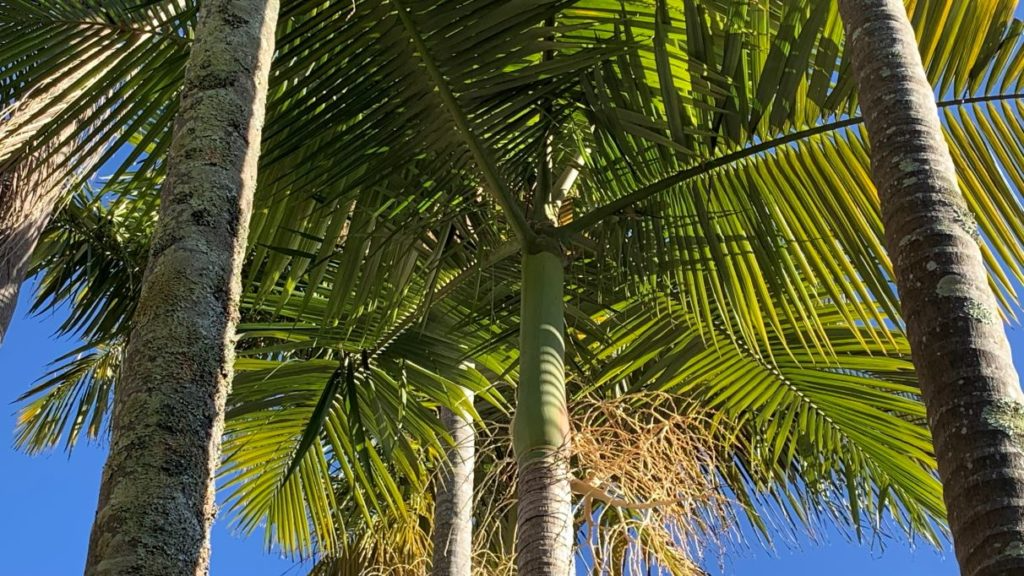
Signs of a Dying Palm Tree
If you have a palm tree on your property, it is important to keep an eye on its health. A dying palm tree can be a hazard and an eyesore, and it is important to address the issue as soon as possible. Here are some of the warning signs that your palm tree may be in trouble:
Yellow or Brown Leaves
One of the first signs of a dying palm tree is yellow or brown leaves. If you notice that the leaves on your palm tree are discolored, it may be a sign that the tree is not getting enough nutrients or water. In some cases, yellow or brown leaves may also be a sign of disease or insect infestation.
Wilting or Drooping Fronds
Another sign of a dying palm tree is wilting or drooping fronds. If you notice that the fronds on your palm tree are drooping or wilting, it may be a sign that the tree is not getting enough water or that the roots are damaged. In some cases, wilting or drooping fronds may also be a sign of disease or insect infestation.
Trunk Discoloration or Softness
If you notice that the trunk of your palm tree is discolored or soft, it may be a sign that the tree is dying. Discoloration or softness may be a sign of disease or insect infestation, or it may be a sign that the tree is rotting from the inside out. If you notice any of these signs, it is important to take action as soon as possible to save your palm tree.
Steps to Revive a Dying Palm Tree
Palm trees that are suffering can be revived by following these steps.
1. Remove the palm from its current pot
For potted palms, first remove them from their current pot, clean the pot if you want to plant them back into the same pot. Follow my guide here on how to disinfect plant pots without using bleach.
2. Replace the soil with new potting mix
Remove the excess soil from the bottom of the palm gently with your fingers. Don’t disturb the roots too much but remove enough soil to make room for it in the pot.
3. Add mulch
The next step for both potted and palms planted in the ground is to add a layer of new mulch. Old mulch can be removed and put in your compost bin and new bark mulch can be added around the base of the palm. This will help the roots to recover, keeping them moist for longer and protecting the soil.
This will also reduce weed competition and allow the palm to absorb the nutrients it needs to grow new leaves and recover.
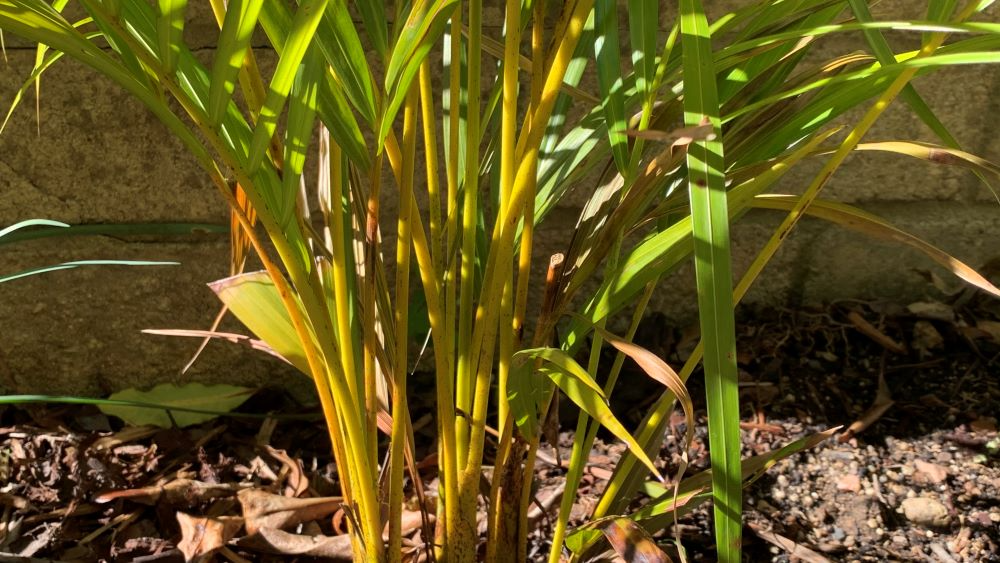
4. Remove old leaves
Removing old, damaged leaves from the palm will help it to recover and grow new leaves. This will open up the palm, allowing more sunlight to the new leaves and stem. Old, damaged leaves will not regrow so can be removed with sharp secateurs.
If frost was the cause of the leaf damage then it is best to leave old leaves on until the frosts have passed. Many palms are sensitive to frosts so leaving old, damaged leaves on can protect the new leaves. Once the risk of frost has passed the old leaves can then be trimmed off.
5. Add natural fertilizer
Water a dying palm well with fish emulsion or dilute nitrogen fertilizer to help the plant to recover. Natural liquid fertilizers like fish emulsion are perfect as they are mild and contain a natural mix of nutrients.
Add in some seaweed solution to help the roots to recover. This will also feed the soil and encourage worms to tunnel up from the deeper soil.
6. Move it into a part shade position
For potted palm trees it can be best to move them into a part shade position to recover. Sunburn can damage the leaves so while the palm is recovering you can move it into a space to avoid the afternoon sun.
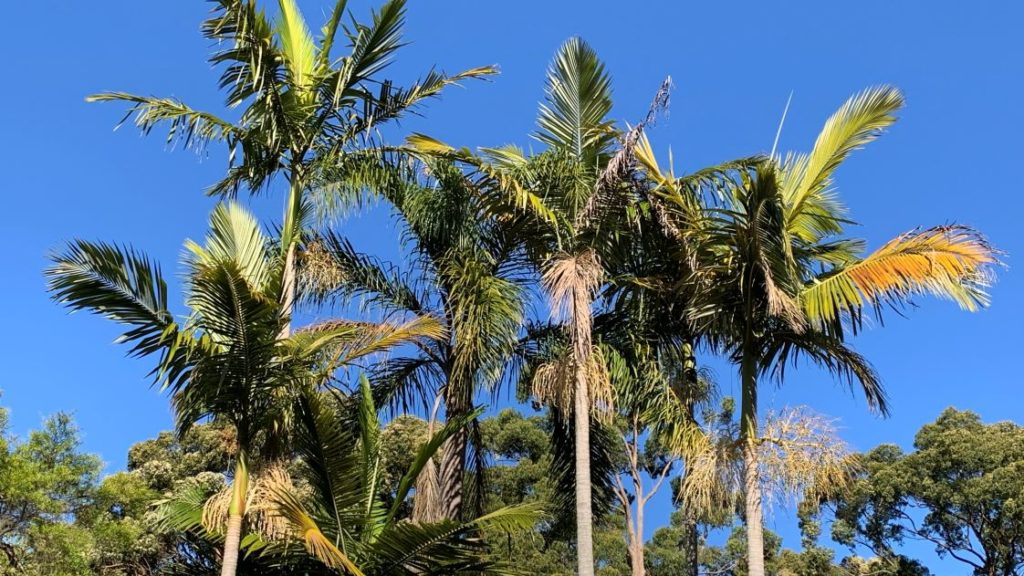
7. Water it well
One of the most common reasons for a palm tree’s decline is improper watering. Overwatering or underwatering can both lead to the death of a palm tree. Therefore, it is essential to water your palm tree correctly once you have moved it to a new pot.
To properly water your palm tree, you should:
- Water your palm tree deeply and thoroughly, but not too frequently.
- Water your palm tree when the top layer of soil is dry to the touch.
8. Treat pests or diseases
It is important to give your palm tree an overall check for pests or diseases. Common pests that affect palm trees include scale insects and mealybugs. Diseases such as Fusarium wilt and lethal yellowing can also lead to the death of a palm tree. If your tree has any of these problems it is important to treat it so it can recover.
To treat pests or diseases, you can:
- Use insecticidal soap or Neem oil to treat pest infestations.
- Remove any infected fronds or parts of the tree to prevent the spread of disease.
- Consult with a professional arborist to diagnose and treat any severe pest or disease problems.
By following these methods, you can revive a dying palm tree and bring it back to life. Remember to be patient and consistent in your care, and your palm tree will thrive once again.
What Causes a Palm Tree to Die
There are many reasons why palm trees may die but here are the top problems and how you can solve them for a healthy palm.
Too much water
Indoor palm trees that are planted in pots are prone to overwatering. While it seems that palms might love a lot of water as they are a tropical plant it is very easy to overwater one planted indoors. You will notice that a palm is overwatered when it develops black tips on the end of its leaves.
Make sure that the palm is not sitting in water in a pot tray after you have watered. Instead place the pot in your sink or outdoors and allow the excess water to drain out.
Palms will only need to be watered up to 2 times per week in summer. Palms have a wide root system that is made to tolerate dry spells but absorb water quickly when it rains. Only add water when the top 2 inches of soil has dried out and allow the palm a few days in between watering.

Not enough sun
Palms can die if they are not getting enough sunlight. Many palms can tolerate shade but if they are kept indoors in a dark position they can die quickly. For indoor palms place them near a bright window to allow the leaves to get bright light and photosynthesize.
Not enough water
Palms that are left to dry out too much can die over time. A palm that is underwatered will turn brown on the tips which will extend through to the stem. Do not confuse this with the natural replacement of old palm leaves which will turn brown and drop off as they are replaced with new leaves.
A dying palm tree that is not getting enough water will have many leaves that turn brown including new leaves.
A palm that is dying from not enough water can be revived with regular water and a dose of seaweed solution. I like to mix a dash of seaweed solution into my watering can and water the plant every 2 days for the next 1-2 weeks.
You should see new leaves start to appear in the center of the palm. You can then reduce the watering back to once or twice per week. The old leaves can then be trimmed off once new leaves appear.
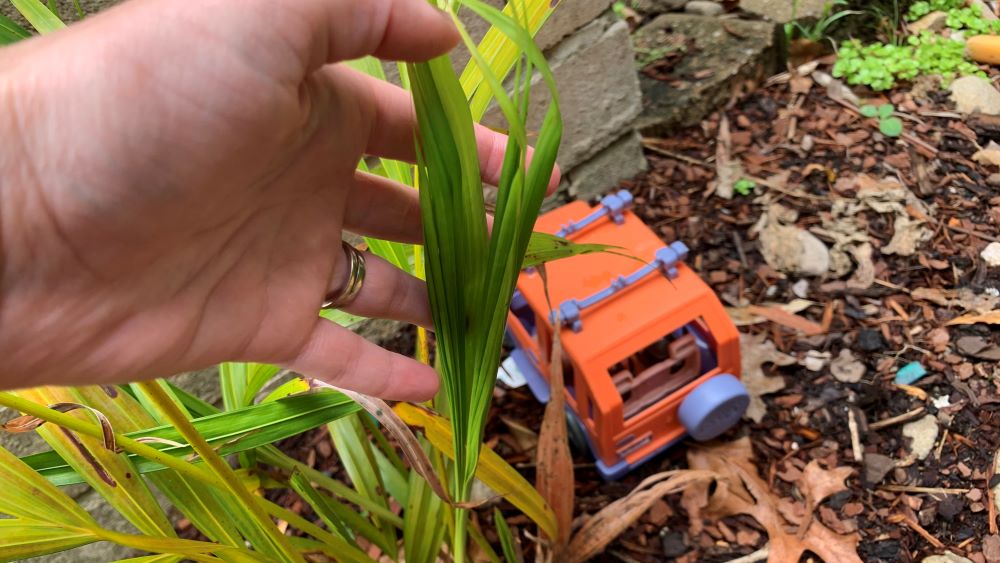
Improper Watering
Overwatering or underwatering your palm tree can cause plant death. Too much water can cause root rot, while too little water can cause the fronds to wilt and turn brown. It’s important to water your palm tree regularly, but not excessively, and to make sure that the soil is well-drained.
Poor Soil Conditions
Palm trees require well-draining soil that is rich in nutrients. If the soil is too compacted or lacks essential nutrients, the palm tree may not be able to absorb water and nutrients properly, leading to its decline. Adding organic matter to the soil can help improve its quality and drainage.
Pest or Disease Infestation
Pests and diseases can also cause problems with palm trees. Common pests that affect palm trees include mites, scale, and mealybugs, while common diseases include fungal infections and bacterial infections. Regularly inspecting your palm tree for signs of pests or diseases can help you catch and treat the problem early.
How to Keep Your Palm Tree Healthy
Here are some tips to keep your palm tree healthy:
Regular Fertilization
Fertilizing your palm tree is essential to keep it healthy. Use a slow-release fertilizer that is specifically formulated for palm trees. Apply the fertilizer according to the manufacturer’s instructions. Over-fertilizing your palm tree can cause damage to the roots and leaves.
You could also use a natural slow release fertilizer like pelleted chicken manure which will add organic matter to the soil at the same time.
Pruning Practices
Pruning your palm tree is important to remove dead or damaged leaves. This helps to prevent the spread of disease and pests. Use clean and sharp pruning shears to avoid damaging the tree. Cut the leaves as close to the trunk as possible without damaging the trunk. Avoid cutting healthy leaves as they are essential for the tree’s health.
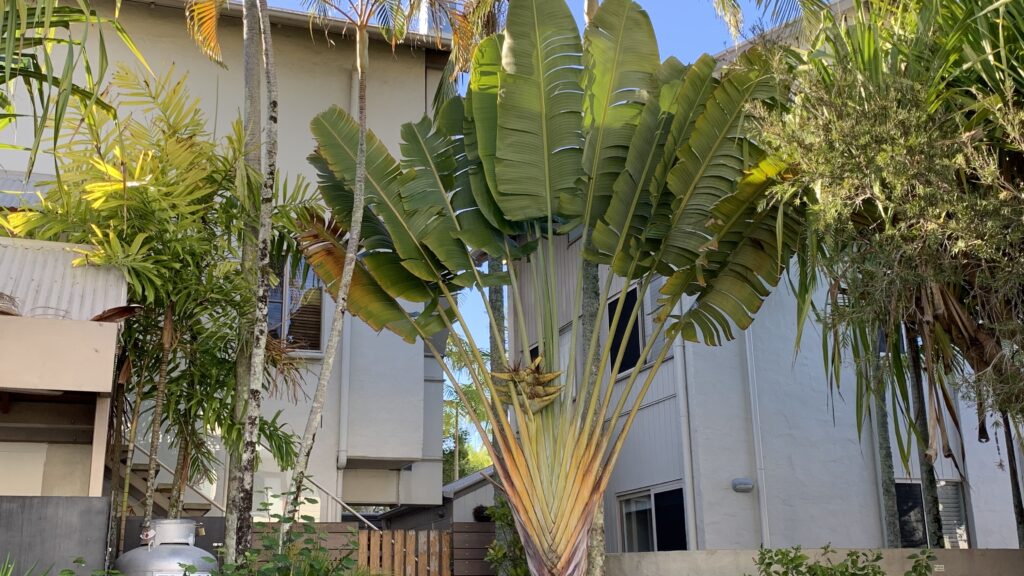
Routine Health Checks
Regularly inspect your palm tree for signs of disease or pests. Look for yellowing or brown leaves, spots, or holes in the leaves, and any signs of pests. If you notice any of these signs, take action immediately to prevent further damage to the tree.
In addition to these preventive measures, make sure that your palm tree is planted in well-draining soil and receives adequate water and sunlight. Taking these steps can help you maintain a healthy palm tree for years to come.
Summary
Dying palm trees can be saved by first working out what the problem is and then treating it. The most common reasons a palm tree will die is underwatering and not enough light. Overwatering is common for indoor palms as they will not drain as well as those planted in the ground.
I am growing a range of palm trees including golden cane palms, bamboo palms and kentia palms. All of these palms grow happily outside in our subtropical climate. All palms can be tidied up by removing old leaves that are replaced with new ones.
Frequently Asked Questions
How can I revive a palm tree that is dying?
Reviving a dying palm tree may seem like a daunting task, but it is possible to save your tree by taking proper care of it. The first step is to identify the cause of the problem. If your palm tree is not getting enough water, it may be suffering from drought stress. In this case, you should water your tree deeply and regularly. If your palm tree is being overwatered, you should reduce the frequency of watering and ensure that the soil is well-drained. Proper fertilization and pruning can also help revive a dying palm tree.
What are the signs that a palm tree is dying?
There are several signs that your palm tree may be dying. These include yellow or brown leaves, stunted growth, and a trunk that is soft or spongy to the touch. If you notice any of these signs, it is important to take action immediately to save your tree.
Can palm trees recover from frost damage?
Palm trees are generally not tolerant of frost and can suffer significant damage from cold temperatures. However, some species of palm trees are more cold-hardy than others and may be able to recover from frost damage if they are properly cared for. If your palm tree has suffered frost damage, it is important to remove any dead or damaged fronds and protect the tree from further cold temperatures.
What are the common causes of palm tree death?
There are several common causes of palm tree death, including overwatering, underwatering, nutrient deficiencies, pest infestations, and diseases. It is important to identify the cause of the problem and take steps to address it as soon as possible to prevent your tree from dying.
What steps can I take to prevent my palm tree from dying?
To prevent your palm tree from dying, it is important to provide it with proper care and maintenance. This includes watering your tree deeply and regularly, fertilizing it with a high-quality fertilizer, pruning it regularly, and protecting it from pests and diseases. It is also important to plant your palm tree in a location that provides it with the appropriate amount of sunlight and protection from harsh weather conditions.
How often should I fertilize my palm tree to keep it healthy?
The frequency of fertilization for your palm tree will depend on the specific needs of the species. In general, palm trees should be fertilized every three to four months during the growing season.
It is important to use a high-quality fertilizer that is specifically formulated for palm trees and to follow the manufacturer’s instructions for application. Over-fertilization can be harmful to your tree, so be sure to apply the fertilizer in the correct amount and at the appropriate time.
I am an accredited practicing dietitian, experienced gardener and a dedicated cook. I love writing and sharing my experience so you can learn from my successes and mistakes.
